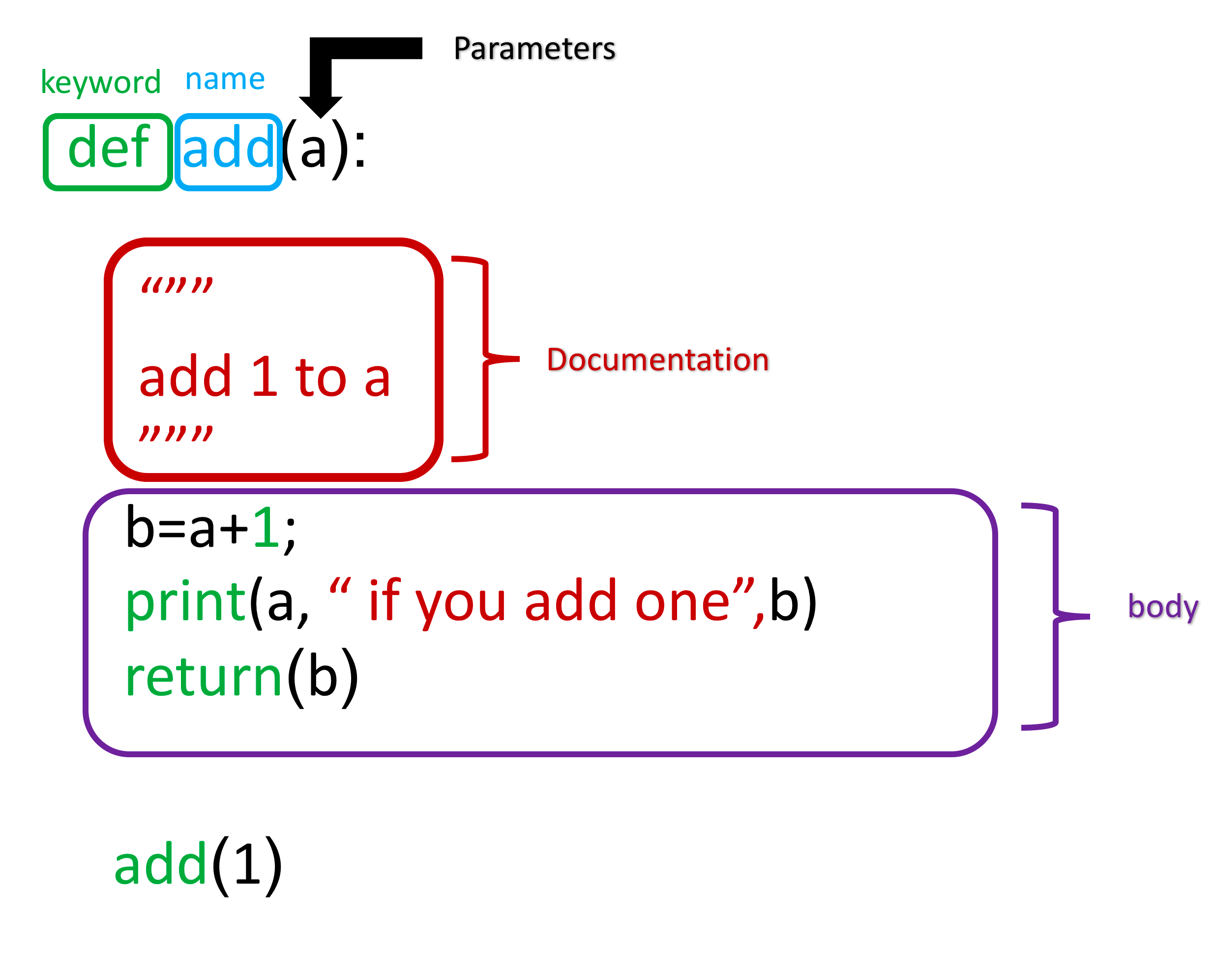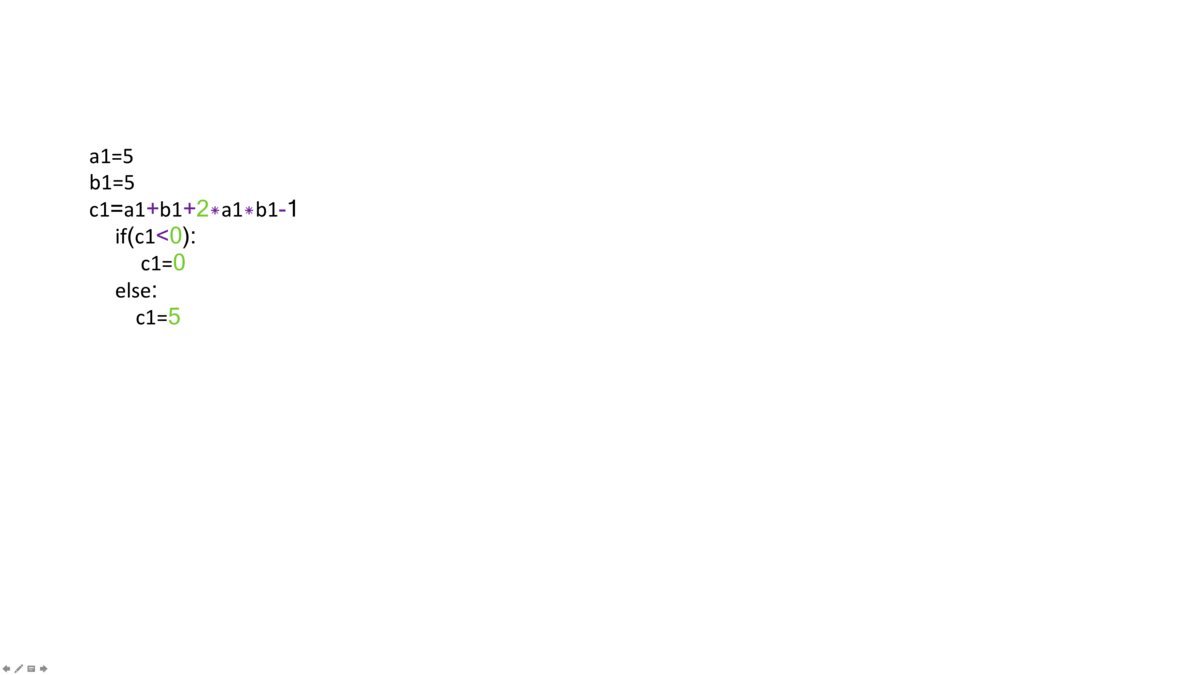Python Collections-Functions in Python
The Python tutorials are written as Jupyter notebooks and run directly in Google Colab—a hosted notebook environment that requires no setup. Click the Run in Google Colab button.
Colab link - Open colab
Functions
A function is a reusable block of code which performs operations specified in the function. They let you break down tasks and allow you to reuse your code in different programs.There are two types of functions :
- Pre-defined functions
- User defined functions
What is a Function?
You can define functions to provide the required functionality. Here are simple rules to define a function in Python:- Functions blocks begin
deffollowed by the functionnameand parentheses().- There are input parameters or arguments that should be placed within these parentheses.
- You can also define parameters inside these parentheses.
- There is a body within every function that starts with a colon (
:) and is indented.- You can also place documentation before the body
- The statement
returnexits a function, optionally passing back a valueAn example of a function that adds on to the parameter
aprints and returns the output asb:
# First function example: Add 1 to a and store as b
def add(a):
b = a + 1
print(a, "if you add one", b)
return(b)
The figure below illustrates the terminology:

We can obtain help about a function :
# Get a help on add function
help(add)
We can call the function:
# Call the function add()
add(1)
If we call the function with a new input we get a new result:
# Call the function add()
add(2)
We can create different functions. For example, we can create a function that multiplies two numbers. The numbers will be represented by the variables a and b:
# Define a function for multiple two numbers
def Mult(a, b):
c = a * b
return(c)
The same function can be used for different data types. For example, we can multiply two integers:
# Use mult() multiply two integers
Mult(2, 3)
Two Floats:
# Use mult() multiply two floats
Mult(10.0, 3.14)
We can even replicate a string by multiplying with an integer:
# Use mult() multiply two different type values together
Mult(2, "Michael Jackson ")
Variables
The input to a function is called a formal parameter.
A variable that is declared inside a function is called a local variable. The parameter only exists within the function (i.e. the point where the function starts and stops).
A variable that is declared outside a function definition is a global variable, and its value is accessible and modifiable throughout the program. We will discuss more about global variables at the end of the lab.
# Function Definition
def square(a):
# Local variable b
b = 1
c = a * a + b
print(a, "if you square + 1", c)
return(c)
The labels are displayed in the figure:

We can call the function with an input of 3:
# Initializes Global variable
x = 3
# Makes function call and return function a y
y = square(x)
y
We can call the function with an input of 2 in a different manner:
# Directly enter a number as parameter
square(2)
If there is no return statement, the function returns None. The following two functions are equivalent:
# Define functions, one with return value None and other without return value
def MJ():
print('Michael Jackson')
def MJ1():
print('Michael Jackson')
return(None)
# See the output
MJ()
# See the output
MJ1()
Printing the function after a call reveals a **None** is the default return statement:
# See what functions returns are
print(MJ())
print(MJ1())
Create a function con that concatenates two strings using the addition operation:
# Define the function for combining strings
def con(a, b):
return(a + b)
# Test on the con() function
con("This ", "is")
[Tip] How do I learn more about the pre-defined functions in Python?
We will be introducing a variety of pre-defined functions to you as you learn more about Python. There are just too many functions, so there's no way we can teach them all in one sitting. But if you'd like to take a quick peek, here's a short reference card for some of the commonly-used pre-defined functions: Reference
Functions Make Things Simple
Consider the two lines of code in Block 1 and Block 2: the procedure for each block is identical. The only thing that is different is the variable names and values.
Block 1:
# a and b calculation block1
a1 = 4
b1 = 5
c1 = a1 + b1 + 2 * a1 * b1 - 1
if(c1 < 0):
c1 = 0
else:
c1 = 5
c1
Block 2:
# a and b calculation block2
a2 = 0
b2 = 0
c2 = a2 + b2 + 2 * a2 * b2 - 1
if(c2 < 0):
c2 = 0
else:
c2 = 5
c2
We can replace the lines of code with a function. A function combines many instructions into a single line of code.
Once a function is defined, it can be used repeatedly. You can invoke the same function many times in your program.
You can save your function and use it in another program or use someone else’s function.
The lines of code in code Block 1 and code Block 2 can be replaced by the following function:
# Make a Function for the calculation above
def Equation(a,b):
c = a + b + 2 * a * b - 1
if(c < 0):
c = 0
else:
c = 5
return(c)
This function takes two inputs, a and b, then applies several operations to return c.
We simply define the function, replace the instructions with the function, and input the new values of a1, b1 and a2, b2 as inputs. The entire process is demonstrated in the figure:

Code **Blocks 1** and **Block 2** can now be replaced with code **Block 3** and code **Block 4**.
Block 3:
a1 = 4
b1 = 5
c1 = Equation(a1, b1)
c1
Block 4:
a2 = 0
b2 = 0
c2 = Equation(a2, b2)
c2
Pre-defined functions
There are many pre-defined functions in Python, so let's start with the simple ones.
The print() function:
# Build-in function print()
album_ratings = [10.0, 8.5, 9.5, 7.0, 7.0, 9.5, 9.0, 9.5]
print(album_ratings)
The sum() function adds all the elements in a list or tuple:
# Use sum() to add every element in a list or tuple together
sum(album_ratings)
The len() function returns the length of a list or tuple:
# Show the length of the list or tuple
len(album_ratings)
Using if/else Statements and Loops in Functions
The return() function is particularly useful if you have any IF statements in the function, when you want your output to be dependent on some condition:
# Function example
def type_of_album(artist, album, year_released):
print(artist, album, year_released)
if year_released > 1980:
return "Modern"
else:
return "Oldie"
x = type_of_album("Michael Jackson", "Thriller", 1980)
print(x)
We can use a loop in a function. For example, we can print out each element in a list:
# Print the list using for loop
def PrintList(the_list):
for element in the_list:
print(element)
# Implement the printlist function
PrintList(['1', 1, 'the man', "abc"])
Setting default argument values in your custom functions
You can set a default value for arguments in your function. For example, in the isGoodRating() function, what if we wanted to create a threshold for what we consider to be a good rating? Perhaps by default, we should have a default rating of 4:
# Example for setting param with default value
def isGoodRating(rating=4):
if(rating < 7):
print("this album sucks it's rating is",rating)
else:
print("this album is good its rating is",rating)
# Test the value with default value and with input
isGoodRating()
isGoodRating(10)
Global variables
So far, we've been creating variables within functions, but we have not discussed variables outside the function. These are called global variables.
Let's try to see what printer1 returns:
# Example of global variable
artist = "Michael Jackson"
def printer1(artist):
internal_var = artist
print(artist, "is an artist")
printer1(artist)
If we print internal_var we get an error.
We got a Name Error: name 'internal_var' is not defined. Why?
It's because all the variables we create in the function is a local variable, meaning that the variable assignment does not persist outside the function.
But there is a way to create global variables from within a function as follows:
artist = "Michael Jackson"
def printer(artist):
global internal_var
internal_var= "Whitney Houston"
print(artist,"is an artist")
printer(artist)
printer(internal_var)
Scope of a Variable
The scope of a variable is the part of that program where that variable is accessible. Variables that are declared outside of all function definitions, such as the myFavouriteBand variable in the code shown here, are accessible from anywhere within the program. As a result, such variables are said to have global scope, and are known as global variables.
myFavouriteBand is a global variable, so it is accessible from within the getBandRating function, and we can use it to determine a band's rating. We can also use it outside of the function, such as when we pass it to the print function to display it:
# Example of global variable
myFavouriteBand = "AC/DC"
def getBandRating(bandname):
if bandname == myFavouriteBand:
return 10.0
else:
return 0.0
print("AC/DC's rating is:", getBandRating("AC/DC"))
print("Deep Purple's rating is:",getBandRating("Deep Purple"))
print("My favourite band is:", myFavouriteBand)
Take a look at this modified version of our code. Now the myFavouriteBand variable is defined within the getBandRating function.
A variable that is defined within a function is said to be a local variable of that function. That means that it is only accessible from within the function in which it is defined.
Our getBandRating function will still work, because myFavouriteBand is still defined within the function.
However, we can no longer print myFavouriteBand outside our function, because it is a local variable of our getBandRating function; it is only defined within the getBandRating function:
# Example of local variable
def getBandRating(bandname):
myFavouriteBand = "AC/DC"
if bandname == myFavouriteBand:
return 10.0
else:
return 0.0
print("AC/DC's rating is: ", getBandRating("AC/DC"))
print("Deep Purple's rating is: ", getBandRating("Deep Purple"))
print("My favourite band is", myFavouriteBand)
Finally, take a look at this example. We now have two myFavouriteBand variable definitions. The first one of these has a global scope, and the second of them is a local variable within the getBandRating function.
Within the getBandRating function, the local variable takes precedence. **Deep Purple** will receive a rating of 10.0 when passed to the getBandRating function.
However, outside of the getBandRating function, the getBandRating s local variable is not defined, so the myFavouriteBand variable we print is the global variable, which has a value of **AC/DC**:
# Example of global variable and local variable with the same name
myFavouriteBand = "AC/DC"
def getBandRating(bandname):
myFavouriteBand = "Deep Purple"
if bandname == myFavouriteBand:
return 10.0
else:
return 0.0
print("AC/DC's rating is:",getBandRating("AC/DC"))
print("Deep Purple's rating is: ",getBandRating("Deep Purple"))
print("My favourite band is:",myFavouriteBand)